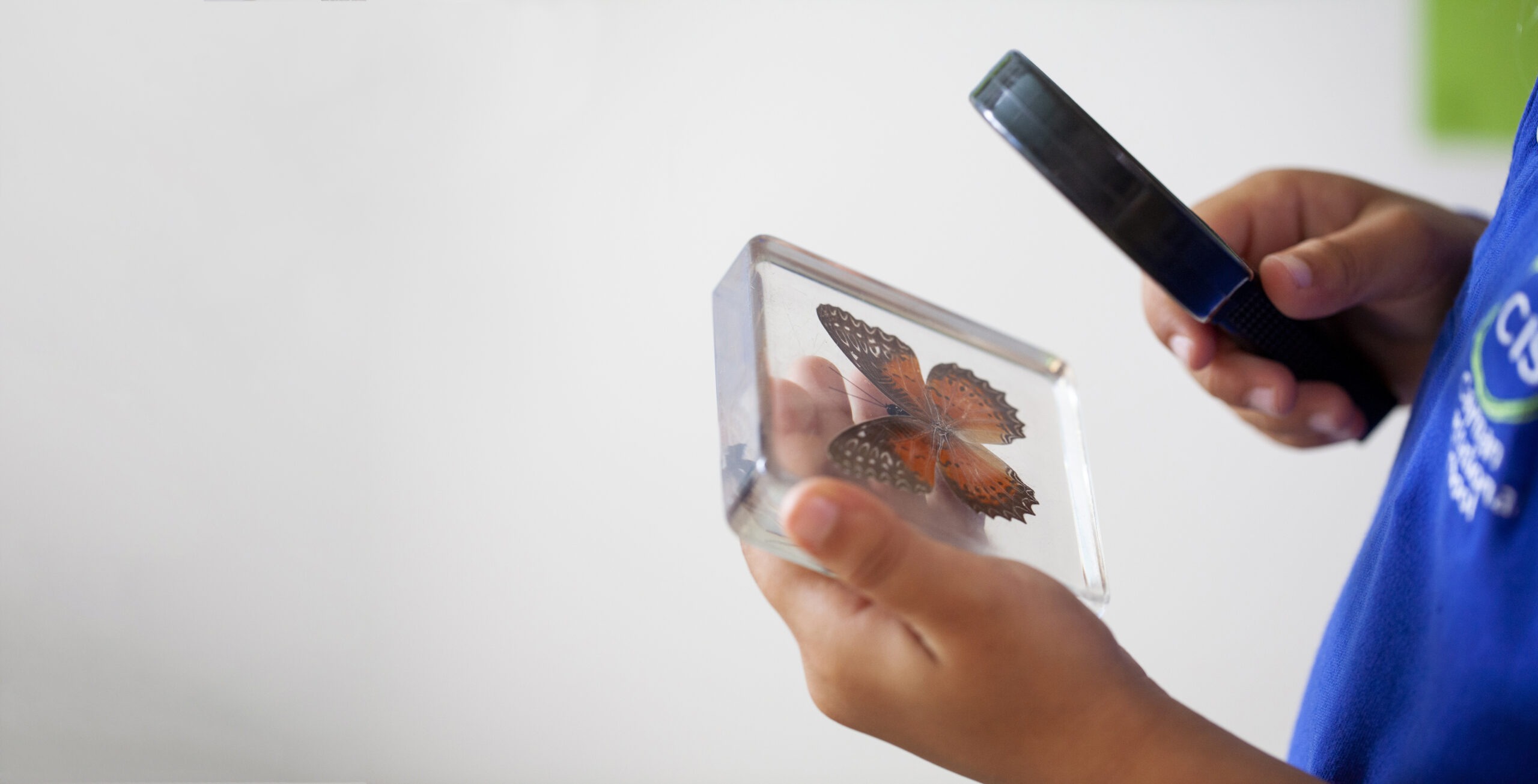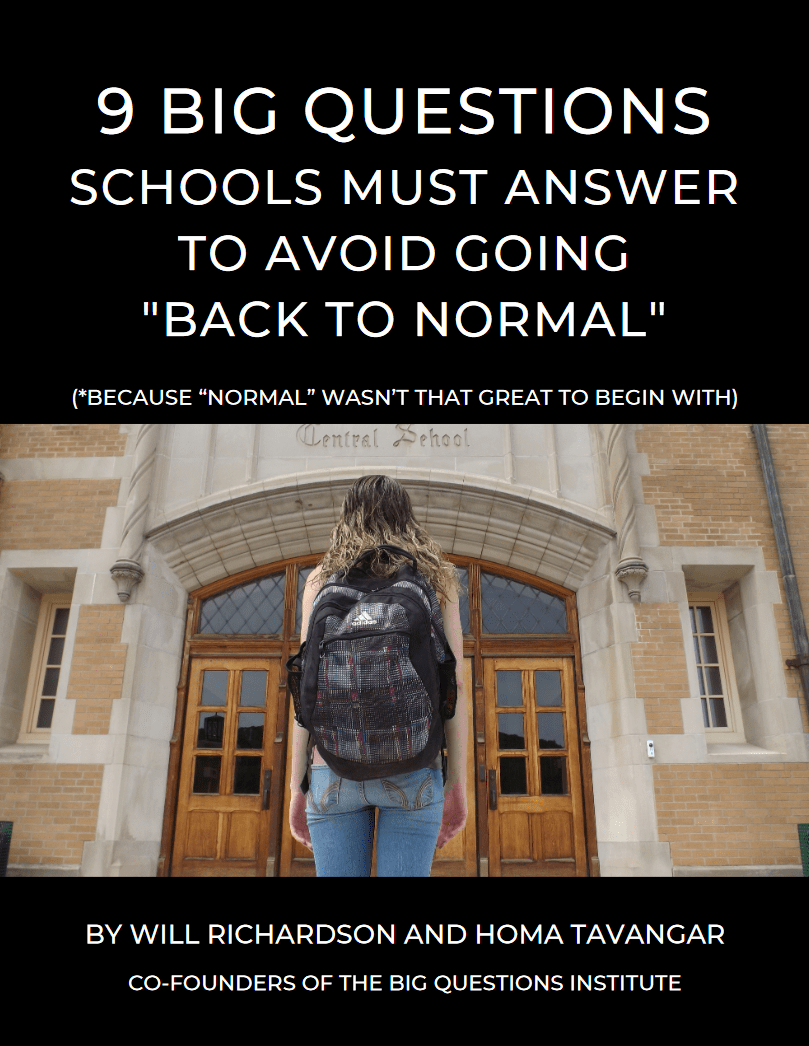The Epic Design Challenge Confronting Educators
By Homa Tavangar and Will Richardson, Co-founders of the Big Questions Institute

Delta. Omicron. The backlash to equity-informed curriculum and “honest” history. Challenges to voting rights and democracy. Mistrust of media and campaigns of disinformation. Rising incidences of mental health crises. Climate emergencies.
The litany of challenges that seems to be impacting our lives each day – and by extension, our schools – hasn’t lightened since global COVID lockdowns. If anything, we seem to be confronting more complexity and volatility than ever before.
While our brains were not built for this much uncertainty, and teachers felt end-of-year exhausted even at the start of this school year, the relentlessness of so many crises is exactly why we can’t turn away. We have hard truths to face. Across the multitude of existential challenges cast our way, which of these was not, at least partially, caused by a breakdown in critical thinking, collaboration, or creative problem-solving? In other words, which of these is not a problem of education?
And, on the flip side, which of these will not be solved by education, by the brilliant students we send out to solve the great problems of our time? These questions are so big they might seem overwhelming. But we have found that when educators take time for honest reflection, they might actually uncover new sources of hope.
Shaking Our Worldview
Some of our new sources of hope have come from thinkers that shake our worldview. Among these, Arundhati Roy, Mariame Kaaba, adrienne marie brown, and Zachary Stein.
In Education in a Time Between Worlds, Zachary Stein poses a big question: “What should education look like in the twenty-first century?” He frames a challenge that has taken center stage in our work:
“This is the task of education today: to confront the almost unimaginable design challenge of building an educational system that provides for the re-creation of civilization during a world system transition. This challenge brings us face-to-face with the importance of education for humanity and the basic questions that structure education as a human endeavor.”
While it may seem a bit hyperbolic to suggest that we are in the midst of a “world system transition,” the signs of existential change confront us daily, while so much of what we know about schools seems stuck in the industrial era of the 19th and 20th Centuries.
It’s becoming clearer that the way we define and deliver an “education” has a huge role to play in how we as a collective respond to current and future challenges. And it’s also clear that the growing emphasis on education as a private good used primarily to boost individual wealth or stature is certainly not the path to overcoming our challenges.
That is at the crux of the design challenge that Stein articulates. How do we create an educational experience that centers not just what is best for our collective humanity but, indeed, for all of life on the planet?
The Start of Fearless Inquiry
In light of the new realities (and demands) of the world, a re-imagination of school must focus on increasing relevance, justice, sustainability, and wellness. And that must start with a deep interrogation of current systems, practices, and pedagogies.
As we believe that “fearless inquiry,” a willingness to ask difficult questions and offer honest answers, is at the center of our epic design challenge, here are some starting points to consider:
Relevance: Does the current curriculum (what’s being taught) map to the knowledge, skills, literacies, and dispositions required to thrive in the world today, to confront complex challenges? Are teachers and students using modern tools to learn with? Is the school community engaged in ongoing discussions of ongoing events and changes in the world?
Justice: Are all voices in the school community included in discussions about the experience of school we create? Is access to learning opportunities equitable for every child? Does curriculum center diverse and representative authors, histories, innovators, and lived experiences?
Sustainability: Do we prioritize the well-being of the planet in the decisions we make about the design of our learning spaces, our uses of power and transportation, and the foods that we consume? Are we advocating for planet-friendly practices in our larger school community?
Wellness: What stands in the way of the physical, mental, social, and spiritual well-being of our teachers and students? How are we centering well-being in our decisions about practice and pedagogy (i.e. assessments, time for play, advisory, etc.)? How are we preparing ourselves to navigate an extended period of “no-normal”?
As educators, we are the ultimate futurists, staking our success on the success of our students who represent and will shape the future. They are civilization builders.
The design challenge facing educators certainly is epic. Yet if we can design for a more relevant, just, sustainable, and healthy learning experience, imagine how schools might help shape the world we step into.

You can follow Will at @willrich45 and Homa at @HomaTav. Learn more about the Big Questions Institute here.
You can download Will and Homa’s free ebook, “9 BIG Questions Schools Must Answer to Avoid Going “Back to Normal” (*Because “Normal” Wasn’t That Great to Begin With)” at this link.
This article was originally published in the January 2022 edition of ISS Newslinks.

